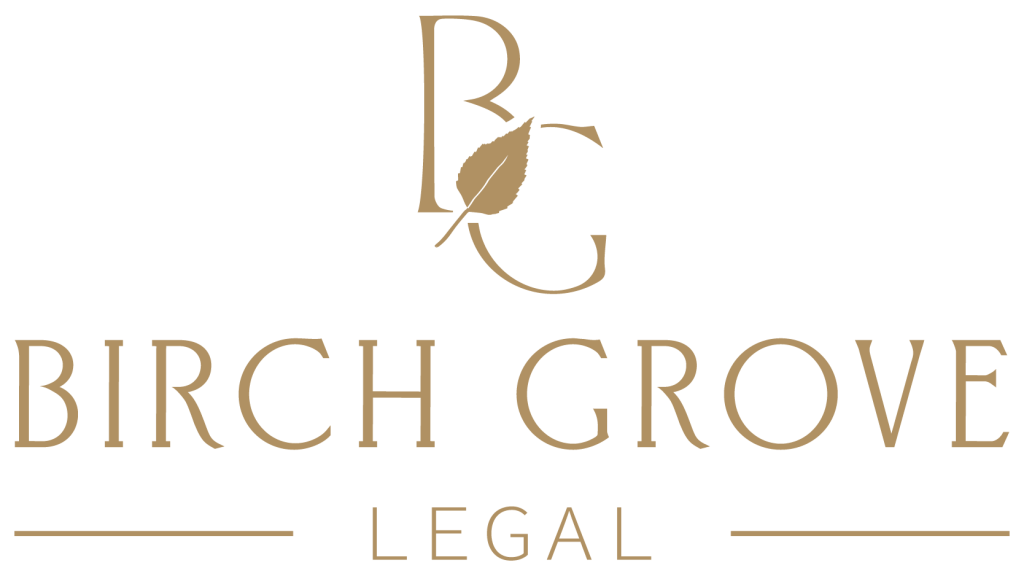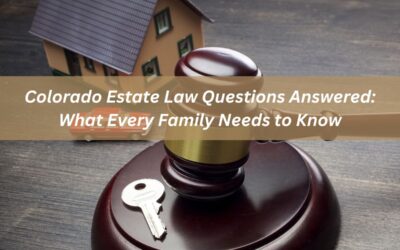Colorado asset protection is something most people overlook, until it’s too late. One lawsuit, divorce, or creditor judgment can instantly threaten everything you’ve worked for. It’s not just the ultra-wealthy who are at risk, your home, savings, and business assets are vulnerable without proper safeguards.
Even worse, many Colorado residents assume their assets are automatically protected under state law. But in reality, Colorado has limited self-settled trust laws, and your property could be exposed if your plan isn’t structured early and correctly. Once a claim is filed, your options narrow quickly.
That’s where we come in. As legal professionals focused on Colorado estate and asset protection planning, we help individuals, families, and business owners build layered strategies that hold up under pressure, protecting your personal assets now and for generations to come.
In this article, we’ll walk you through everything: the tools, the laws, and answers to the most common Colorado asset protection questions. Let’s start with what asset protection really means in Colorado and how to use it to your advantage.
What Is Colorado Asset Protection?

Asset protection refers to proactive strategies used to safeguard valuable assets from risks such as lawsuits, liabilities, or divorce. These strategies don’t rely on secrecy—they use legal structures that limit a creditor’s ability to reach them. In a broader sense, ScienceDirect defines asset protection as a process of risk identification and mitigation through layered protective measures.
These strategies don’t rely on hiding your assets, but on legally structuring them in ways that reduce or eliminate a creditor’s ability to reach them.Rather than waiting until a problem arises, the goal is to build legal barriers before you’re exposed to risk.
Why Asset Protection Matters in Colorado
If you live or hold property in Colorado, you’re subject to state-specific rules about how much of your property is automatically protected. Colorado, unlike some states, offers limited creditor protection, especially when it comes to self-settled trusts where you benefit from the same trust you create.
That means if you own your home, savings, investments, or a business outright and in your own name, those assets could be fair game in a judgment.
Who Needs Asset Protection?
You don’t need to be a millionaire to be targeted in a lawsuit. Colorado residents across all income levels benefit from asset protection, especially those in:
- High-risk professions: Doctors, dentists, attorneys, real estate developers
- Business ownership: Entrepreneurs, landlords, LLC members
- Blended families: Where inheritance issues can trigger disputes
- Retirees: Who want to preserve savings from long-term care or creditors
- Married couples: Facing divorce or uncertain asset division
If you own property, have significant savings, or operate a business, you are already exposed even if unintentionally.
What Tools Are Used in Colorado Asset Protection?
The most common tools in a Colorado asset protection strategy include:
- Irrevocable Trusts – Assets placed here are no longer legally yours, shielding them from lawsuits and creditors.
- LLCs (Limited Liability Companies) – Protect your personal assets from business liabilities.
- Homestead Exemption – Protects a portion of the equity in your primary residence.
- Retirement Accounts – IRAs, 401(k)s, and pensions offer statutory protection under both state and federal law.
- Insurance and Annuities – In some cases, proceeds may be shielded from creditors.
The Colorado Law Limitation: No Self-Settled Trust Protection
One of the most important things to understand is that Colorado does not support self-settled asset protection trusts (DAPTs). In other words, you cannot protect your own assets simply by transferring them into a trust that you still benefit from.
This is a major distinction from states like Nevada, Alaska, or South Dakota, where DAPTs are recognized by statute. In Colorado, these trusts can be easily pierced in court, meaning your assets remain at risk if not structured correctly.
Timing Is Everything
In asset protection, timing determines legality and effectiveness. Transferring property after you’re already facing a lawsuit or financial threat can be ruled a fraudulent conveyance which not only voids the transfer but may trigger additional legal consequences.
Proper Colorado asset protection must be implemented before problems arise, not in reaction to them.
It’s Not About Hiding—It’s About Structuring
Asset protection is often misunderstood. It’s not about secrecy or offshore shell games. It’s about transparent, compliant structuring using legal tools recognized by Colorado law. You’re not trying to hide your wealth, you’re making it harder for a creditor to legally take it from you.
When your assets are placed in the right structures, you remain in control (to the extent allowed), while keeping them insulated from unnecessary risk.
How Colorado Asset Protection Laws Work

Colorado does not recognize Domestic Asset Protection Trusts (DAPTs), which means you can’t protect your own assets by placing them in a trust where you’re also a beneficiary. According to the Colorado Bar Association, this makes irrevocable third-party trusts and other legally compliant structures essential for effective protection.
Without proper planning, courts can seize or force liquidation of your assets during a judgment. To be protected, your structures must be created before any claim arises. Timing, documentation, and correct legal structuring are everything.
What Protections Exist in Colorado?
Even though some protections are automatic, they’re limited:
- Homestead Exemption: Protects up to $250,000 in equity in your primary residence or $350,000 if you’re over 60 or disabled.
- Retirement Accounts: 401(k)s and IRAs are shielded under federal law and state statutes.
- Wages: 75% of disposable income is protected.
- Public Benefits: Social Security, workers’ comp, and unemployment benefits are protected.
- Life Insurance and Annuities: With proper beneficiary designation, these can be creditor-proof.
But beyond these exemptions, high-value assets, business interests, and real estate require stronger strategies.
Why Estate Planning and Asset Protection Go Hand-in-Hand

Asset protection focuses on shielding your wealth during your lifetime. Estate planning prepares your assets for transfer after death. Both rely on legal tools like trusts, LLCs, and titling strategies to minimize risk, reduce taxes, and secure control.
In Colorado, where some protection laws are limited, combining these approaches ensures both your short-term safety and your long-term legacy are legally covered.
Live Protection vs. Legacy Protection
Estate planning determines who inherits your assets, how, and when. But what if you’re sued while alive? That’s where asset protection comes in. By placing your property in LLCs, irrevocable trusts, or other legal entities, you can prevent it from being seized while also avoiding probate. Together, these strategies keep your estate intact both now and after you’re gone.
Taxes and Creditors: Two Different Threats
Both tax law and creditor law affect your estate but in different ways. Tax planning aims to reduce what your estate owes the IRS. Asset protection, on the other hand, prevents loss through lawsuits or personal liability. A properly structured trust can help achieve both goals, especially when designed by a lawyer familiar with Colorado asset protection and estate law.
Legal Tools That Work in Colorado

Let’s break down the tools that actually work in Colorado and how to use them legally and effectively.
Irrevocable Trusts
Since self-settled trusts don’t offer strong protection here, the focus shifts to irrevocable third-party trusts. These move ownership of the asset to someone else (a trustee), meaning you no longer technically own it. This creates a barrier that most creditors can’t legally cross.
When set up properly, these can:
- Protect cash, property, or business equity
- Reduce estate tax
- Provide long-term control for family beneficiaries
But remember, control and benefit must be separated. If you treat the trust like it’s still “yours,” it may not hold up.
Offshore Trusts
Offshore trusts in jurisdictions like the Cook Islands or Nevis provide maximum security. These are popular with professionals and high-net-worth individuals who face higher litigation risks. They’re not governed by Colorado law, which makes them harder for U.S. courts to penetrate.
However, they require:
- Early setup (before any liability arises)
- Full legal compliance (domestic and foreign)
- Trustee services and often higher setup fees
This tool isn’t for everyone, but for many, it’s the strongest available.
Limited Liability Companies (LLCs)
Forming an LLC separates your personal assets from business activity. If your company is sued, your home and savings are generally protected. Colorado recognizes charging order protection, which limits a creditor’s access to LLC ownership—they may only receive distributions, not control.
Multi-member LLCs provide stronger shielding than single-member ones. When used to hold real estate, an LLC can reduce exposure to tenant lawsuits. As the Corporate Finance Institute (CFI) explains, LLCs combine the liability protection of corporations with the tax flexibility of partnerships, making them a powerful tool for asset protection planning.
Homestead Exemption
Mentioned earlier, the homestead exemption protects equity in your primary home. But it’s limited to $250,000 or $350,000 and only applies to your primary residence.
If you own rental properties, vacation homes, or commercial buildings, this law doesn’t apply. That’s why combining it with trusts or LLCs is essential.
How to Build an Effective Protection Plan

Protecting your assets requires more than just a document, it’s a step-by-step legal process. Here’s how to do it right:
Step 1: Inventory and Assess Risk
List all your property, business interests, accounts, and liabilities. Ask:
- What’s titled in your name?
- Are you in a high-risk profession?
- Do you own real estate?
- Is your estate vulnerable to divorce or lawsuits?
Knowing what you own and what could be at risk is the first step.
Step 2: Choose Your Legal Tools
Not all tools are right for everyone. You might use:
- Irrevocable Trust: For family assets or life insurance
- LLC: For rental properties or small businesses
- Offshore Trust: For high-net-worth or international exposure
- Exemptions: For retirement accounts and life insurance
Step 3: Transfer Ownership Properly
Simply creating a trust or LLC isn’t enough. You must fund it by retitling assets into it. This includes:
- Changing deed titles for real estate
- Updating bank account ownership
- Assigning business shares or membership interests
Step 4: Stay Compliant
Compliance isn’t a one-time action. To keep your protection plan valid:
- File annual LLC reports
- Keep personal and business accounts separate
- Avoid co-mingling funds
- Follow trustee responsibilities if managing a trust
Courts look closely at how structures are maintained and not just how they’re formed.
Step 5: Review and Update
Your life, assets, and risks change. So should your plan.
Re-evaluate your asset protection plan:
- After buying or selling property
- After marriage, divorce, or children
- If you move to another state
- When laws change
Annual reviews with an estate planning attorney are key.
Protect Your Assets the Right Way
Colorado asset protection can seem complex, but it doesn’t have to be. With the right legal tools and expert guidance, you can protect your property, savings, and business from unnecessary risk. If you’re creating a new plan or need to strengthen an existing one, we’re ready to support you.
Our legal team builds personalized protection strategies using trusts, LLCs, and state-approved exemptions, all fully compliant with Colorado law. Acting early is key. Don’t wait for a lawsuit or financial crisis to make changes.
Your assets deserve a solid defense. Schedule your consultation today, we’ll help you build a plan that works and lasts.
Frequently Asked Questions
Does Colorado have a Domestic Asset Protection Trust (DAPT) law?
No. Colorado does not allow self-settled DAPTs. This means you can’t fully protect assets using a trust that you benefit from. To gain effective protection in Colorado, you’ll need to use third-party irrevocable trusts, LLCs, or even offshore trusts, depending on your needs and exposure level.
What assets are automatically protected in Colorado?
Some assets are exempt under Colorado law without needing legal restructuring. These include retirement accounts (like 401(k)s), certain life insurance benefits, limited home equity through the homestead exemption, and a portion of your wages. However, high-value real estate and business assets usually require further protection.
Can I set up an asset protection plan after being sued?
Not effectively. If you try to transfer assets after being sued, it could be deemed a fraudulent transfer which courts can reverse. The best time to create a protection plan is before any claim arises. That way, the structure is seen as legitimate and legally defensible.
Is an LLC better than a trust for asset protection?
It depends on the asset type. An LLC is excellent for real estate, rental income, and separating business liability. A trust may be better for preserving wealth across generations or protecting personal property. Most strong asset protection plans in Colorado use a combination of both tools.
How much does it cost to set up an asset protection plan in Colorado?
Costs vary depending on complexity. A basic LLC or irrevocable trust setup may cost a few thousand dollars. More advanced or offshore structures could exceed $10,000. The right plan is an investment and far less expensive than losing assets in a lawsuit or divorce.





0 Comments